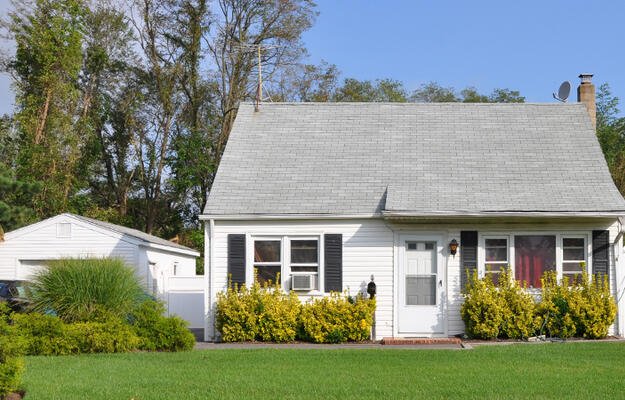
How Impact Investing Can Sustain the Affordable Housing Industry
by Flynann Janisse, executive director, Rainbow Housing Assistance Corporation
Affordable housing means more than living comfortably on a given salary. It also stands for empowerment, encouragement, and independence. Affordable housing embodies the culture of our industry, core values that were established to support the livelihood of all people regardless of their economic status. The service-enriched housing model makes it possible for low-income people to reduce reliance on social service programs by engaging in self-sufficiency opportunities with links to self-sustaining life skills. Lastly, affordable housing exemplifies our industry’s commitment to lead social and economic change while providing housing to the most vulnerable people and families, including veterans, the mentally ill, the elderly, the disabled, and youth. Impact investments in human capital that seek to generate social and environmental impact alongside a financial return can increase access to this basic human need and create a platform for social and economic advancement. Investing in human capital could help sustain quality, affordable housing, an industry dependent on the tenants who make these communities their home. Social investment bonds may be the solution for service-enriched housing. This “feel-good” financing method provides capital to social service providers so they can deliver services to those in need—in this case, residents of affordable housing communities.
US Department of Housing and Urban Development secretary Julián Castro has said, “We believe that housing is a power platform to spark great opportunities in people’s lives and help them achieve the American Dream.” Studies support this assertion, showing that people are happier, healthier, and more financially stable when they have access to quality, affordable housing supported by connectivity to viable social resources. Research also shows a significant deficiency in the amount of available affordable housing, with 25 percent of working-renter households experiencing a severe housing-cost burden.
Much has already been said about contributors to the affordable housing shortage, such as loss of existing affordable stock. Yet, another contributor is underexplored. When we drill into the costs of affordable housing, the tenant base is a key driver for revenue and operating expenses. By investing in tenants’ education, financial standing, and well-being, service-enriched housing offers sustainability to the household, improves the rent rolls, and reduces vacancy loss. Affordable housing communities can improve their balance sheets by focusing on the value of those who live and work in their community. Affordable housing leaders and developers conduct the resident orchestra. By investing in residents’ performance, affordable housing providers will share in the rewards of their success.
For residents, success in housing is an ideal package that consists of quality construction, access to transportation, a sense of community, and close proximity to amenities. Implementing policies—including supportive social services that promote self-sufficiency, that make a positive, meaningful impact on residents’ lives—can help residents achieve success.
We have heard these ideas from our elected leaders. The destructive nature of the Great Depression required big ideas and even bigger actions. The establishment of the Public Works Administration honored the value of work in one’s life—that is, the importance of contributing to society. This work built roads, dams, hospitals, libraries, and communities. Estimates suggest that between 1933 and 1939, over 70 percent of schools built were Public Works Administration projects. Impact investing in human capital through service-enriched affordable housing is our generation’s way to honor the value of all residents and dignify the importance and role of “home.”
Sheila Crowley, a 2015 inductee into the Affordable Housing Hall of Fame and former president and CEO of the National Low Income Housing Coalition, has testified before Congress that solving the need to provide more affordable housing must be a public-private partnership. No group can shoulder that responsibility and should not be expected to. Better outcomes are produced when everyone has a seat at the table in a free exchange of ideas. By all accounts, comprehensive tax reform is coming. This serious issue is a tremendous opportunity to expand the Low-Income Housing Tax Credit, a proven vehicle for attracting private investors to affordable housing. The private sector must also identify ways to reduce operating costs, which includes demanding and funding supportive services that offer a better quality of life. Private-sector investors can also help define the metrics by which a program’s success will be measured.
Like with any other investment, there is a need to measure success through return on investment. Although investments in human capital can be difficult to clearly define, one thing is certain: when establishing self-sufficiency programs and services, engaging tenants as a catalyst to change requires investing resources designed to empower social and economic change. Without this, there is no return on investment. In Rainbow’s experience, within two years of resident service implementation (on average), housing assets experience dramatic expense reduction. Beyond tangible financial components that may be easily viewed and measured, intangible components are equally measurable, qualified, and quantified. Testimonies from tenants and anecdotal evidence of economic transformations for an individual or family form an essential part of the evidence of impact. The key is looking closer at the tenant base’s solvency and the correlation back to the asset’s financial performance. If the supportive services improve financial performance, the model might yield the financial returns that impact investors seek.
At Rainbow, we provide services to tens of thousands of people across the country and see firsthand the positive outcomes a service-enriched housing model can produce. Every day, we witness the benefits of helping people achieve their goals, whether it be a first-generation college graduate writing a résumé that opens the door to better employment opportunities, or increasing residents’ access to health care, helping them lower cholesterol and live healthier. Service-enriched housing programs aim to encourage, empower, and motivate the tenant base to take action to advance their life skills and increase their earning potential to promote greater self-sufficiency. As service providers, we must enhance housing as a stepping stone for residents in their pursuit of independence.
Stability and predictability in one’s home are the foundation for positive change. Impact investing in our country’s human capital can reignite the promise of the American Dream, rewarding hard work and perseverance. The need for these investments has never been greater, and the time for bold action is here. Building strong communities through impact investing is an idea whose time has come.
Flynann Janisse is executive director of Rainbow Housing Assistance Corporation (Rainbow), a nonprofit organization that provides service-enriched housing programs for residents of rental housing communities throughout the country. With award-winning services available throughout the United States, Rainbow seeks to create and preserve quality, affordable housing for families and individuals of diverse ethnic, social, and economic backgrounds.


